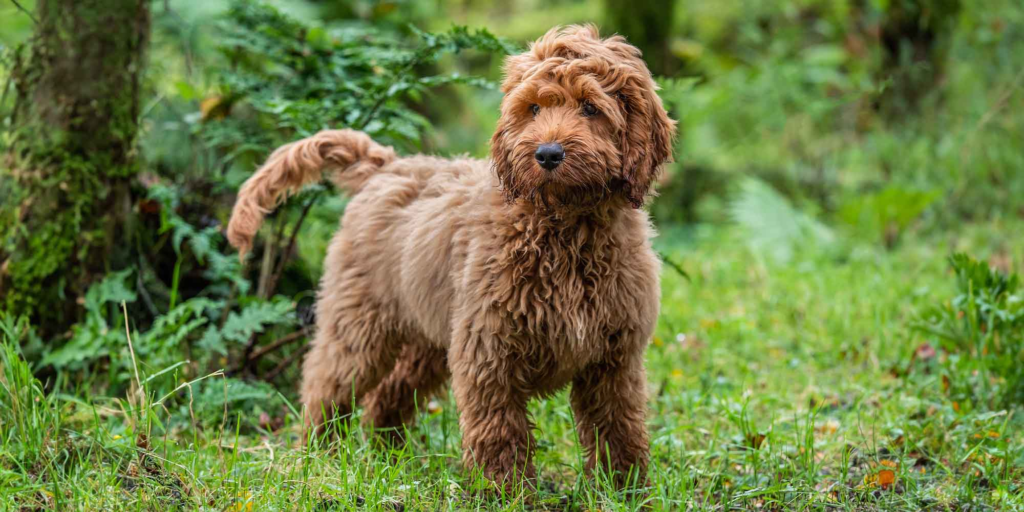The Ultimate Guide to Poodle Mixes: A Comprehensive Overview

Poodle mixes have become increasingly popular in recent years, attracting dog lovers with unique appearances and delightful personalities. These hybrid breeds, created by crossing a poodle with another dog breed, often showcase the best traits of both parents. In this guide, we’ll explore everything you need to know about poodle mixes, from their characteristics and benefits to health considerations and grooming needs. Whether you’re a long-time dog owner or contemplating your first furry friend, this article aims to provide a thorough understanding of poodle mixes and help you decide if one is right for you.
What Are Poodle Mixes?
Understanding Hybrid Breeds
Poodle mixes, often called “doodles,” are hybrid dog breeds that result from crossing a poodle with another dog breed. The idea behind creating hybrid breeds is to combine the desirable traits of both parent breeds, potentially leading to puppies that exhibit a mix of characteristics. This breeding trend gained popularity in the late 20th century, primarily because of the poodle’s hypoallergenic coat and intelligence.
The Poodle Parent: A Quick Overview
Before diving into the specifics of poodle mixes, it’s essential to understand the poodle itself. Poodles come in three sizes—Standard, Miniature, and Toy—and are renowned for their intelligence, trainability, and hypoallergenic coats. They are also known for their playful and energetic personalities, making them wonderful companions for active families and individuals.
Popular Poodle Mixes

There are numerous poodle mixes, each with its unique personality, appearance, and care requirements. Here’s a look at some of the most popular poodle mixes, often found in homes around the world.
Goldendoodle
The Goldendoodle is a cross between a golden retriever and a poodle. This breed has gained immense popularity for its friendly nature and intelligence. Goldendoodles tend to be affectionate, social, and great with children, making them perfect family pets. They come in various sizes depending on whether the poodle parent is Standard, Miniature, or Toy.
Traits and Characteristics
- Coat: Their coat can be wavy, curly, or straight, often requiring regular grooming to keep it healthy.
- Temperament: Goldendoodles are friendly, intelligent, and eager to please, making training relatively easy.
- Exercise Needs: They require daily exercise to stay healthy and happy, enjoying activities like walks, fetch, and playtime.
Labradoodle
The Labradoodle combines the Labrador Retriever and the poodle. Originally bred as a hypoallergenic guide dog, Labradoodles are known for their friendly disposition and versatility. They adapt well to various living situations, whether in a busy household or a quieter setting.
Traits and Characteristics
- Coat: Their coat can vary from straight to curly, with some being low-shedding, thanks to the poodle genes.
- Temperament: Labradoodles are known for their friendly and outgoing nature, making them excellent companions for families and individuals alike.
- Exercise Needs: Regular exercise is crucial; they enjoy outdoor activities and need mental stimulation to prevent boredom.
Cockapoo
A mix between a cocker spaniel and a poodle, the Cockapoo is one of the first designer dog breeds. They are known for their affectionate nature and playful spirit, making them excellent companions for families, singles, and seniors.
Traits and Characteristics
- Coat: Their coat can vary widely, from soft and wavy to tightly curled. Regular grooming is necessary to avoid matting.
- Temperament: Cockapoos are friendly, pleasant, and eager to please, making them relatively easy to train.
- Exercise Needs: They require regular exercise, including walks and playtime, to stay physically and mentally healthy.
Schnoodle
The Schnoodle is a delightful mix of a schnauzer and a poodle. Known for their charming personality and distinctive appearance, Schnoodles can vary in size depending on whether the poodle parent is Standard, Miniature, or Toy.
Traits and Characteristics
- Coat: Schnoodles typically have a curly or wavy coat that requires regular grooming.
- Temperament: They are affectionate, intelligent, and loyal, often forming strong bonds with their families.
- Exercise Needs: Schnoodles enjoy daily walks and playtime, and they thrive on social interaction.
Bernedoodle
Combining a Bernese Mountain Dog and a poodle, the Bernedoodle is known for its striking appearance and gentle temperament. They are often large dogs with lovable personalities.
Traits and Characteristics
- Coat: Their coat can be wavy or curly, typically requiring regular grooming.
- Temperament: Bernedoodles are gentle, friendly, and good-natured, making them suitable for families and individuals.
- Exercise Needs: They require regular exercise and enjoy activities like hiking, walking, and playing outdoors.
Maltipoo
The Maltipoo is a mix between a Maltese and a poodle, often favored for their small size and affectionate nature. They make excellent companions for those living in smaller spaces.
Traits and Characteristics
- Coat: Maltipoos have soft, curly coats that require regular grooming to prevent matting.
- Temperament: They are known for being friendly, playful, and affectionate, often forming strong bonds with their owners.
- Exercise Needs: Maltipoos enjoy short walks and playtime, making them well-suited for apartment living.
Benefits of Poodle Mixes
Poodle mixes come with a variety of benefits, making them appealing to potential dog owners. Here are some key advantages to consider when thinking about adding a poodle mix to your family.
Hypoallergenic Coats
One of the most significant benefits of poodle mixes is their hypoallergenic coats. Poodles are known for their low-shedding fur, which helps reduce allergens in the home. This trait can be particularly beneficial for allergy sufferers, as it minimizes the chances of allergic reactions to pet dander.
Intelligent and Trainable
Poodles are among the most intelligent dog breeds, and their offspring often inherit this trait. Poodle mixes are generally quick learners, making training a more manageable and enjoyable experience. They respond well to positive reinforcement methods, making them ideal candidates for obedience training, agility courses, or even therapy work.
Friendly and Social Nature
Most poodle mixes are known for their friendly, sociable dispositions. They often get along well with children, other pets, and even strangers, making them great family dogs. Their friendly nature often translates to a desire for companionship and interaction, making them wonderful pets for individuals and families alike.
Versatile Sizes and Looks
Poodle mixes come in various sizes, depending on the poodle parent. Whether you prefer a small Maltipoo or a larger Goldendoodle, there’s likely a poodle mix that fits your lifestyle and space requirements. This versatility allows prospective dog owners to find the perfect fit for their homes and lifestyles.
Unique Appearances
Poodle mixes often have unique and attractive appearances, combining the best physical traits of both parent breeds. From the fluffy, curly coats of a Labradoodle to the distinctive markings of a Bernedoodle, each poodle mix has its charm. This uniqueness can make owning a poodle mix an exciting experience, as you may end up with a dog that stands out from the crowd.
Considerations Before Getting a Poodle Mix
While poodle mixes have many advantages, it’s essential to consider various factors before bringing one into your home. Understanding these aspects can help you make an informed decision and ensure a happy, healthy relationship with your new furry friend.
Grooming Needs
Poodle mixes often require regular grooming to maintain their coats and prevent matting. Depending on the breed combination, grooming requirements can vary. Some may need brushing several times a week, while others may require professional grooming every few weeks. It’s crucial to be prepared for the time and financial commitment involved in grooming your poodle mix.
Exercise Requirements
Most poodle mixes are energetic and require regular exercise to stay healthy and happy. Daily walks, playtime, and mental stimulation through games or training sessions are essential for their overall well-being. If you lead a more sedentary lifestyle, it’s crucial to ensure you can meet the exercise needs of your poodle mix.
Potential Health Issues
Like all dog breeds, poodle mixes can be prone to specific health issues inherited from their parent breeds. For example, Goldendoodles may be susceptible to hip dysplasia, while Labradoodles might face certain eye conditions. Researching potential health concerns associated with both parent breeds can help you make an informed decision and prepare for any veterinary care your poodle mix may need.
Temperament Variability
As hybrid breeds, poodle mixes can inherit a mix of temperaments from both parent breeds. While many are friendly and social, others may exhibit more reserved or independent traits. Spending time with the puppy’s parents or asking the breeder about their temperaments can provide valuable insight into what to expect.
Time Commitment
Bringing a dog into your home requires a significant time commitment. From training and socialization to exercise and grooming, it’s essential to evaluate whether you can devote the necessary time and energy to your new poodle mix. Ensuring you have the time to dedicate to your furry friend will lead to a happier and healthier relationship.
Training Your Poodle Mix
Training is a crucial aspect of raising a well-adjusted poodle mix. Their intelligence and eagerness to please often make them quick learners, but proper training techniques are essential to ensure success.
Positive Reinforcement Techniques
Positive reinforcement is the most effective training method for poodle mixes. This technique involves rewarding desirable behaviors with treats, praise, or playtime. By consistently rewarding good behavior, you can encourage your poodle mix to repeat those actions in the future.
Socialization
Socializing your poodle mix from an early age is vital for developing a well-rounded dog. Exposing them to various environments, people, and other pets helps them build confidence and reduces the likelihood of behavioral issues later on. Puppy classes, dog parks, and organized playdates are excellent opportunities for socialization.
Basic Obedience Training
Teaching your poodle to mix basic commands like sit, stay, and come is essential for their safety and well-being. These commands can help you manage your dog in various situations and promote good behavior. Consistency and patience are key, as some dogs may take longer to grasp certain commands.
Advanced Training and Activities
Once your poodle mix has mastered basic obedience, you can explore more advanced training options. Activities like agility training, therapy dog training, or even competitive obedience can provide mental stimulation and strengthen your bond with your dog. Many poodle mixes excel in these areas due to their intelligence and enthusiasm for learning.
Health and Nutrition
Maintaining your poodle mix’s health is crucial for their overall well-being. Providing a balanced diet, regular veterinary care, and exercise can help ensure a long and healthy life.
Regular Veterinary Care
Regular veterinary check-ups are essential for monitoring your poodle mix’s health. Your veterinarian can provide vaccinations, preventative care, and advice on any specific health concerns associated with the breed. Routine examinations can help catch potential issues early, ensuring your dog receives prompt treatment.
Proper Nutrition
Feeding your poodle mix a balanced diet is vital for their health and longevity. Choose high-quality dog food appropriate for their age, size, and activity level. Consult your veterinarian for specific dietary recommendations tailored to your dog’s needs. Be mindful of portion sizes, as poodle mixes can be prone to obesity if overfed.
Exercise Routine
Regular exercise is crucial for maintaining your poodle mix’s physical and mental health. Aim for at least 30 minutes to 1 hour of exercise each day, depending on their energy level and breed mix. Activities like walks, fetch, and agility exercises can keep your dog engaged and happy.
Grooming Your Poodle Mix
Proper grooming is essential for keeping your poodle mix looking and feeling their best. The grooming requirements can vary depending on the specific mix, so it’s important to understand what your dog needs.
Brushing
Regular brushing is crucial for preventing matting and tangling in your poodle mix’s coat. Depending on the texture and length of their fur, you may need to brush them daily or several times a week. Use a slicker brush or a comb designed for curly or wavy hair to effectively remove loose fur and debris.
Bathing
Bathing your poodle mix is generally recommended every 4 to 6 weeks, but it can vary depending on their activity level and coat type. Use a gentle, dog-specific shampoo to keep their skin healthy and coat clean. Be sure to rinse thoroughly to avoid any residue that could irritate their skin.
Professional Grooming
Many poodle mixes benefit from professional grooming every few months, especially if they have a more challenging coat to manage. A professional groomer can trim their fur to prevent matting and maintain a neat appearance. Regular grooming sessions can also provide your dog with an opportunity to get accustomed to being handled, which is beneficial for their overall comfort.
Nail Care and Ear Cleaning
Regular nail trimming is essential to prevent discomfort and injury to your poodle mix. Aim to trim their nails every 3 to 4 weeks or as needed. Additionally, clean their ears regularly to prevent infections, especially if your poodle mix has floppy ears. Use a gentle ear cleaner and cotton balls, and avoid inserting anything into the ear canal.
Finding the Right Poodle Mix for You
When considering adding a poodle mix to your family, it’s essential to find the right match for your lifestyle and preferences. Here are some tips for finding the perfect poodle mix:
Research Breeders and Rescues
If you decide to purchase a poodle mix, research reputable breeders who prioritize the health and temperament of their dogs. Look for breeders who are transparent about their breeding practices and provide health clearances for both parent breeds. Alternatively, consider adopting from a rescue organization specializing in poodle mixes or mixed breeds. Many wonderful dogs are waiting for loving homes in shelters and rescues.
Meet the Parents
If possible, meet the puppy’s parents to get an idea of their temperaments and health. This can provide valuable insight into what to expect from your poodle mix. Meeting the parents can also help you assess the living conditions and care provided by the breeder.
Assess Your Lifestyle
Consider your lifestyle, activity level, and living situation when choosing a poodle mix. Some mixes require more exercise and grooming than others, so it’s essential to find a dog that fits your daily routine. Take time to evaluate how much time you can devote to training, exercise, and grooming.
Ask Questions
Don’t hesitate to ask the breeder or rescue organization questions about the poodle mix’s background, health, and temperament. Gathering as much information as possible can help you make an informed decision and ensure a good fit for your family.
Conclusion
Poodle mixes offer a delightful combination of intelligence, friendliness, and unique appearances. With their hypoallergenic coats and charming personalities, they make excellent companions for a variety of lifestyles. However, owning a poodle mix also requires a commitment to grooming, exercise, and training. By thoroughly researching the various poodle mixes, understanding their needs, and evaluating your lifestyle, you can find the perfect furry friend to join your family.
Whether you’re drawn to the playful nature of a Goldendoodle or the affectionate demeanor of a Cockapoo, there’s a poodle mix out there that can bring joy and companionship into your life. So take the plunge, and welcome a poodle mix into your home; you might just discover a new best friend waiting to steal your heart.



